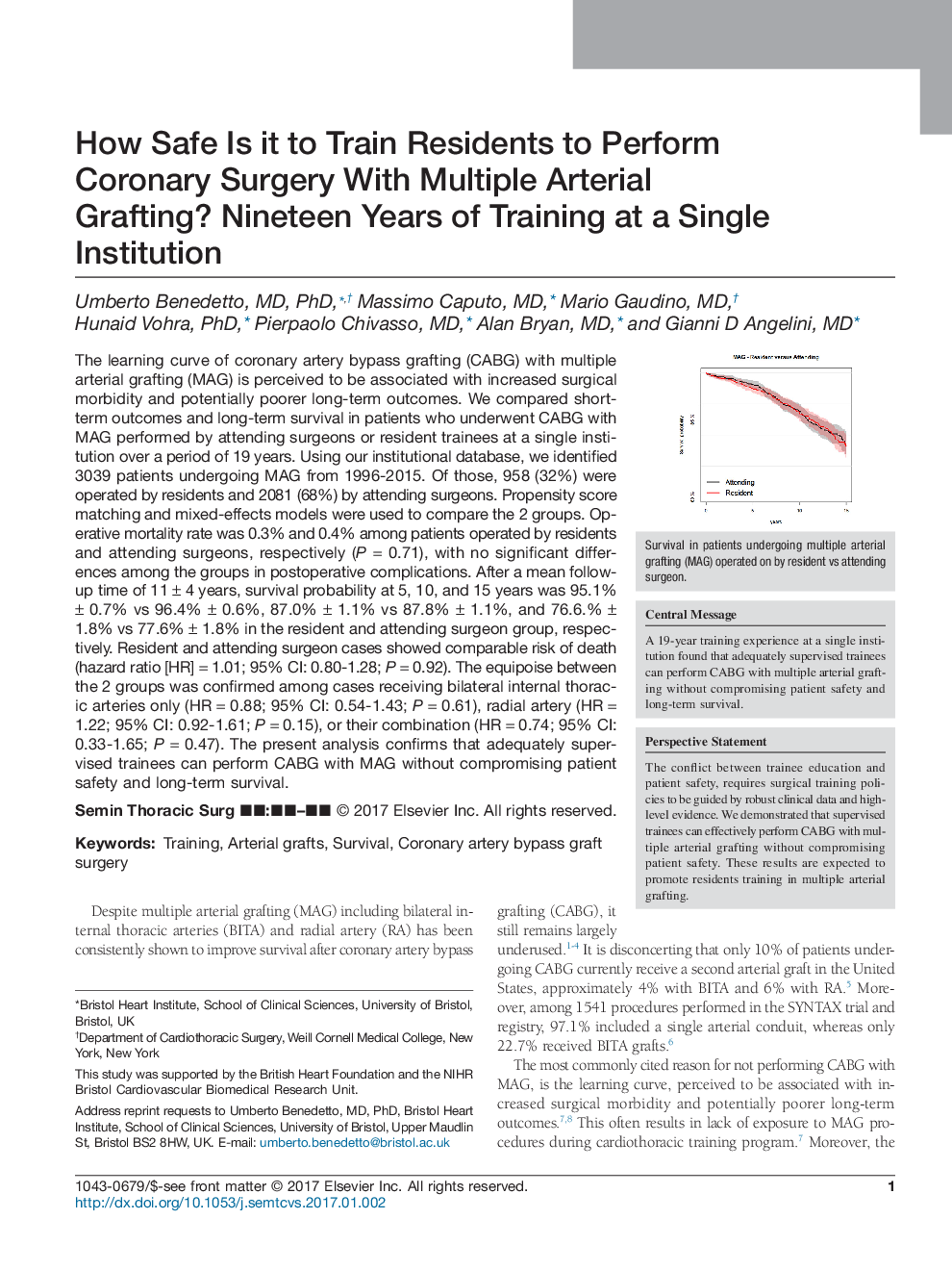| Article ID | Journal | Published Year | Pages | File Type |
|---|---|---|---|---|
| 5621500 | Seminars in Thoracic and Cardiovascular Surgery | 2017 | 11 Pages |
Abstract
The learning curve of coronary artery bypass grafting (CABG) with multiple arterial grafting (MAG) is perceived to be associated with increased surgical morbidity and potentially poorer long-term outcomes. We compared short-term outcomes and long-term survival in patients who underwent CABG with MAG performed by attending surgeons or resident trainees at a single institution over a period of 19 years. Using our institutional database, we identified 3039 patients undergoing MAG from 1996-2015. Of those, 958 (32%) were operated on by residents and 2081 (68%) by attending surgeons. Propensity score matching and mixed-effects models were used to compare the 2 groups. Operative mortality rate was 0.3% and 0.4% among patients operated by residents and attending surgeons, respectively (P = 0.71), with no significant differences among the groups in postoperative complications. After a mean follow-up time of 11 ± 4 years, survival probability at 5, 10, and 15 years was 95.1% ± 0.7% vs 96.4% ± 0.6%, 87.0% ± 1.1% vs 87.8% ± 1.1%, and 76.6.% ± 1.8% vs 77.6% ± 1.8% in the resident and attending surgeon group, respectively. Resident and attending surgeon cases showed comparable risk of death (hazard ratio [HR] = 1.01; 95% CI: 0.80-1.28; P = 0.92). The equipoise between the 2 groups was confirmed among cases receiving bilateral internal thoracic arteries only (HR = 0.88; 95% CI: 0.54-1.43; P = 0.61), radial artery (HR = 1.22; 95% CI: 0.92-1.61; P = 0.15), or their combination (HR = 0.74; 95% CI: 0.33-1.65; P = 0.47). The present analysis confirms that adequately supervised trainees can perform CABG with MAG without compromising patient safety and long-term survival.
Related Topics
Health Sciences
Medicine and Dentistry
Cardiology and Cardiovascular Medicine
Authors
Umberto MD, PhD, Massimo MD, Mario MD, Hunaid PhD, Pierpaolo MD, Alan MD, Gianni D. MD,
